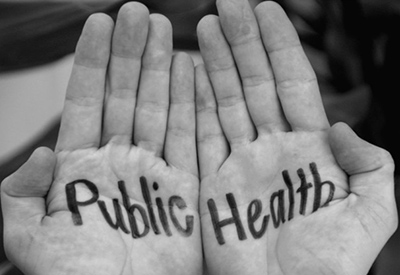
Source: tulane.edu
Public health has always been a major concern to the medical community. Seeing the unsurmountable amount of patients coming to the hospital just helped us reinforce the old adage, “Prevention is better than cure”. Myocardial infarctions, diabetes, lung cancers and unsurprisingly even MVA (Motor vehicle accident) are so common in Malaysia, that you start to wonder, what went wrong and how do we understand the community better?
Well, I guess the Malay proverb “Melentur buluh biarlah dari rebungnya” has a role to play in moulding the public health team. Doctors after all are the ambassadors of public health aren’t they? And it all starts from the grassroots, which in this case from the level of medical student. Some medical schools including mine integrate a “Community and Family Case Studies (CFCS)” into our syllabus. I do not quite know how many medical schools have this kind of programme but in my knowledge, major public universities in Malaysia have adopted this programme as a part of their syllabus.
One might ask, what is so special about this CFCS course?
“The Community and Family Case Studies, which was formulated in 1982, is an integral part of the undergraduate training programme at the School of Medical Sciences, USM leading to the Degree of Medicine (MD). The programme consists of a 12 week teaching block in Phase II and a self-directed learning activity in Phase III. The two-part CFCS programme is a central feature of community oriented training in medicine”
– CFCS Handbook Phase II, Introduction to CFCS
Community oriented training in medicine. Yes, that is the main objective of this programme. To go out and live in the community, understand the social circumstances and try to elicit a sustainable change in the community. My professor once said that the change shouldn’t be idealistic, rather realistic and feasible for the community at large.
I am enrolled in a programme that is similar to the Degree of Medicine in University Sains Malaysia. The only major difference is that mine is an off-shore programme situated in a rural area called Belgaum in Northern Karnataka, India. The social and cultural background of the community is a bit different from Malaysia, thus the public health related issues would also be a different.
One could only understand a community by living within it. In my case, I would like to share my own CFCS experience in India. My batch did our CFCS in a small village named Basavan Kudachi. Majority of the population there work as farmers, ploughing fields and sowing seeds.The truth is sometimes hard to swallow, and even harder to speak it up. One of the challenges of the community that I encountered in my CFCS programme is the economic issues. The people live on a day to day basis and their profit comes from their everyday work. To put it simply, if they do not work that day, they are not going to get any money. How can they spare a day or two in the wards or even going to the out-patient-department (OPD) knowing the fact that if they do not work, their family will have to bear the consequences.
The nearest hospital which is the KLE’s Prabakhar Kore Hospital is 9 km away. Diseases as we know it commonly afflicts the older community and many of them rarely go out of the community to the hospital. During our intervention plan where we did medical check-ups, most of the people have low blood pressure and the female community are mostly anemic.
As for the children, most of them need an improvisation in their menu as a large number of them are malnourished. The mainstay of this problem is the unhygienic practise of not wearing proper footwear and improper hand washing leading to fecal-oral contamination and infestation of worms. Many of the houses still do not have a proper toilets and the practise of open defecation often leads to further percentage of parasitic infestations.
I am looking forward towards a sustainable and feasible change for the community. I hope that the medical students’ intervention plan will work out well so that we can see a better community health in the near future.
We were told by our public health lecturer that since we came into the community, the folks have started taking their medications more consistently. That is good news to hear. I’m looking forward for more positive changes. What’s in it for you? Let’s start getting involved and do our part to help the community.
Maryam Zakiah is a 3rd year medical student at USM KLE International Medical Programme, Belgaum, India. Learn more about the young columnists under The Team tab.
